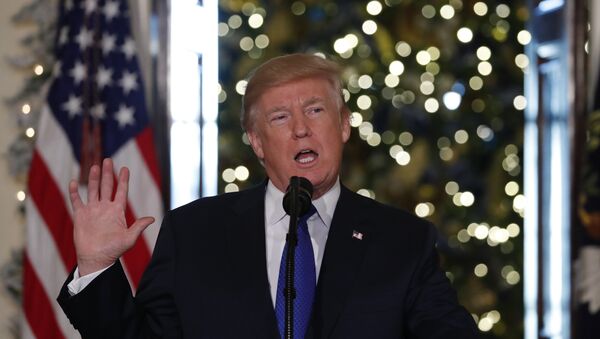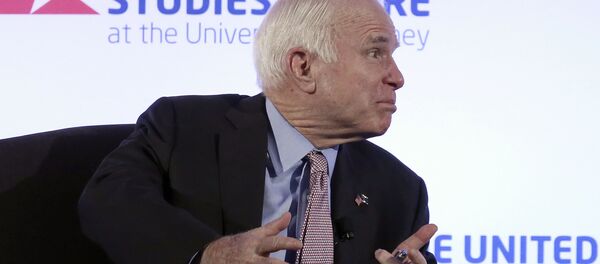Kristian Rouz – The Republican tax reform is in the final days of its approval process and is expected to clear Congress and get signed by the president by Christmas. This as top Republicans and President Trump himself tout an acceleration in economic growth and tax base expansion after the overhaul in enacted.
President Trump praised the Republican effort to pass the tax reform legislation Saturday, saying the move will embolden the nation’s middle class and produce quicker GDP growth, making the economy “rock.”
“It’ll be fantastic for the middle-income people and for jobs, most of all,” President Trump said. “And I will say that because of what we’ve done with regulation and other things our economy is doing fantastically well, but it has another big step to go and it can’t take that step unless we do the tax bill.”
READ MORE: Trump: Tax Reform to Return Money Into US From Overseas, Boost Economy
The president also said the reform would boost economic growth from the current 3 perent pace of expansion to “four, five or even 6 percent, ultimately.”
Economists, however, point to multiple risks and uncertainties surrounding the tax reform plan.
Aside of general Democrat warnings the reform would benefit the wealthy most of all; monetary economists say the decrease in taxes will produce a near-to-medium-term increase in the budget deficit. This deficit is poised to be eventually made up for by the growing taxable base and quicker economic growth, boosting budget revenues in the mid-to-long-term.
"To the extent this heats up the economy, that will help draw people back into the labour force," Phillip Swagel of University of Maryland said.
The majority of current fiscal projections take into consideration the existing levels of tax revenues and fiscal spending. However, the deregulation effort – undertaken by President Trump over the past 11 months – has spurred private-sector enterprise capitalization, as reflected by record-setting stock market indices.
"The calculation at one level is pretty simple," Douglas Holtz-Eakin of the American Action Forum and former director of the Congressional Budget Office said. "We're going to have larger deficits, and that is worth it for the growth we're going to get."
This will allow companies to increase workforce investment as soon as next year, as well as spur capital spending.
"I realise this is a bet on our country's enterprising spirit, and that is a bet I am willing to make," GOP Sen. Bob Corker, of Tennessee, said.
The final version of the bill provides a decrease in the corporate tax rate from 35 percent to 21 percent – its lowest since 1939. Meanwhile, top-earner individual income tax will only drop from 39.6 percent to 37 percent, rendering the Democrat rhetoric of the reform as “benefiting the rich” irrelevant.
Overall, the final bill preserves seven tax brackets, but cuts individual income taxes for middle-class filers most significantly.
READ MORE: Economist: GOP Tax Bill Offers Little for Poor or Middle Class Americans
This is poised to spur consumer confidence, which has already contributed to an untick in sales tax revenues, whilst the elimination of tax code loopholes and deductions, as well as cuts in excessive budget spending, are poised to somewhat offset some of the risks on the fiscal side.
Sen. Corker previously voted against the tax bill, citing his concerns with the rising budget deficit. However, as explained by the Laffer curve rule, such concerns are deemed exaggerated – or are exploited for political purposes.
No Democrat – either in the House or in the Senate – voted for the bill.
The last time the US enjoyed GDP growth above 5 percent per year was back in 1984.





